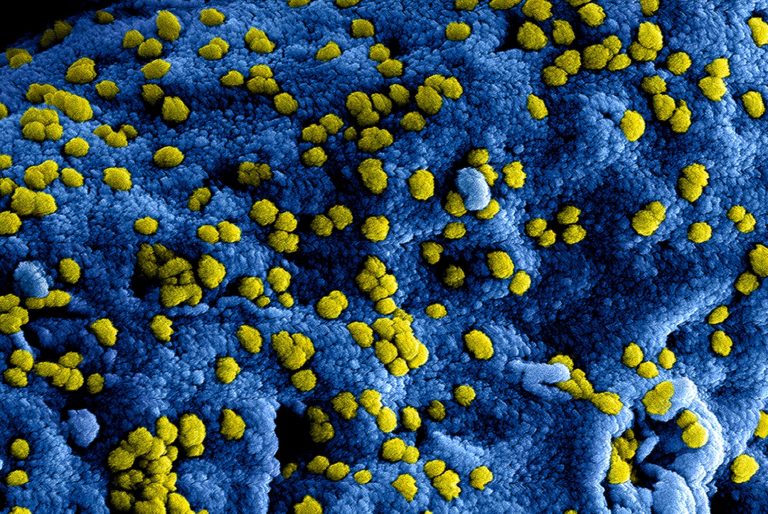July 6, 2021: The EMPEROR-Preserved phase III trial met its primary endpoint, establishing Jardiance® (empagliflozin) as the first and only therapy to significantly reduce the risk of the composite of cardiovascular death or hospitalization for heart failure in adults, with or without diabetes, who live with heart failure with preserved ejection fraction (HFpEF).
Boehringer Ingelheim and Eli Lilly and Company announced the topline results.
When added to the EMPEROR-Reduced trial results, these findings demonstrate Jardiance’s efficacy in all forms of heart failure regardless of ejection fraction.
The safety profile was generally consistent with the known safety profile of Jardiance.
“We look forward to presenting the EMPEROR-Preserved results at ESC 2021, which should offer a significant breakthrough in cardiovascular medicine and a new hope for people with HFpEF, which is an increasingly prevalent public health issue. HFpEF has long been the most challenging form of heart failure to treat,” said Professor Stefan Anker, heart failure cardiologist at Charité Berlin, Germany, and EMPEROR-Preserved principal investigator.
“Building on previous results from the EMPA-REG OUTCOME trial, and the EMPEROR-Reduced trial in heart failure with reduced ejection fraction, the EMPEROR-Preserved findings demonstrate that empagliflozin reduces cardiovascular death or hospitalization for heart failure and has the potential to transform the care of people living with heart failure.”
Heart failure poses a significant global disease burden: more than 60 million patients worldwide have heart failure, and half of them have HFpEF.
Heart failure is a leading cause of hospitalization and is becoming increasingly prevalent in Western countries due to aging populations. The risk of death in people with heart failure rises with each hospital admission.
Heart failure with left ventricular preserved ejection fraction occurs when the left ventricle of the heart is unable to fill properly, resulting in less blood being pumped to the body.
“No approved therapies have been clinically proven to improve outcomes specifically for people with HFpEF, leaving a significant unmet medical need in this already prevalent and increasingly common form of heart failure,” said Mohamed Eid, M.D., M.P.H., M.H.A., vice president, Clinical Development & Medical Affairs, Cardio-Metabolism & Respiratory Medicine, Boehringer Ingelheim Pharmaceuticals, Inc.
“The totality of the data from the EMPEROR-Preserved trial marks a possible new chapter in heart failure, supporting the potential of Jardiance to become the first SGLT2 inhibitor to treat a defined population of adults with heart failure with either preserved or reduced ejection fraction.”
“Jardiance was the first SGLT2 inhibitor to reduce cardiovascular death for people with type 2 diabetes and cardiovascular disease, and we have now reached another important milestone, this time in heart failure,” added Jeff Emmick, M.D., Ph.D., vice president, Product Development, Lilly.
“The EMPEROR-Preserved results offer promise in a type of heart failure that until now has traditionally been very challenging to treat effectively.
The EMPEROR heart failure studies are part of our EMPOWER clinical trial program exploring the effect of Jardiance across a spectrum of cardio-renal-metabolic diseases, aiming to significantly improve outcomes in these highly prevalent conditions that impact many people’s lives.”
The EMPEROR-Preserved trial investigated Jardiance 10 mg compared with placebo. Full results from the EMPEROR-Preserved trial are scheduled for presentation at the European Society of Cardiology (ESC) Congress 2021 on August 27. Boehringer Ingelheim and Lilly plan for regulatory submissions in 2021.
These results add to previous findings from the EMPEROR-Reduced phase III trial, which showed that Jardiance significantly reduced the combined relative risk of cardiovascular death or hospitalization for heart failure by 25% compared to placebo in adults with heart failure with reduced ejection fraction (HFrEF).
Together, these studies demonstrate the benefits of Jardiance for patients across the full heart failure spectrum (including HFrEF and HFpEF).
The EMPEROR-Reduced results formed the basis of the recent approval of a new indication for Jardiance for the treatment of adults with HFrEF by the European Commission. In the U.S., Jardiance is not approved for the treatment of heart failure.
A supplemental New Drug Application (sNDA) for Jardiance to reduce the risk of cardiovascular death or hospitalization for heart failure in adults with HFrEF has been submitted to the U.S. Food and Drug Administration (FDA), with a decision expected later this year.
Research is ongoing regarding Jardiance’s effects on hospitalization for heart failure and mortality in post-myocardial infarction (heart attack) patients with high risk of heart failure. Jardiance is also currently being investigated in chronic kidney disease.
About the EMPEROR Heart Failure Studies
The EMPEROR (EMPagliflozin outcomE tRial in patients with chrOnic heaRt failure) heart failure studies are two phase III, randomized, double-blind trials investigating once-daily Jardiance compared with placebo in adults with heart failure with preserved or reduced ejection fraction*, both with and without diabetes, who are receiving current standard of care:
- EMPEROR-Reduced [NCT03057977] investigated the safety and efficacy of Jardiance in patients with chronic heart failure with reduced ejection fraction (HFrEF).
- Primary endpoint: time to first event of adjudicated cardiovascular death or adjudicated hospitalization for heart failure
- Number of patients: 3,730
- Completion: 2020
- EMPEROR-Preserved [NCT03057951] investigated the safety and efficacy of Jardiance in patients with chronic heart failure with preserved ejection fraction (HFpEF).
- Primary endpoint: time to first event of adjudicated cardiovascular death or adjudicated hospitalization for heart failure [Time Frame: up to 38 months]
- Number of patients: 5,988
- Completion: 2021
*Ejection fraction is a measurement of the percentage of blood the left ventricle pumps out with each contraction. When the heart relaxes, the ventricle refills with blood.
- HFrEF occurs when the heart muscle does not contract effectively, and less blood is pumped out to the body compared with a normally functioning heart.
- HFpEF occurs when the heart muscle contracts normally but the ventricle does not fill with enough blood, so less blood can enter the heart compared with a normally functioning heart.
About the EMPOWER program
The Alliance has developed the EMPOWER program to explore the impact of Jardiance on major clinical cardiovascular and renal outcomes in a spectrum of cardio-renal-metabolic conditions.
Cardio-renal-metabolic conditions are the leading cause of mortality worldwide and account for up to 20 million deaths annually.
Through the EMPOWER program, Boehringer Ingelheim and Lilly are working to advance knowledge of these interconnected systems and create care which offers integrated, multi-organ benefits.
Comprised of nine clinical trials and two real-world evidence studies, EMPOWER reinforces the long-term commitment of the Alliance to improve outcomes for people living with cardio-renal-metabolic conditions.
With more than 400,000 adults enrolled worldwide in clinical trials, it is one of the broadest and most comprehensive clinical programs for an SGLT2 inhibitor to date.
The development program encompasses:
- EMPEROR-Reduced, in adults with chronic heart failure with reduced ejection fraction to reduce the risk of cardiovascular death or hospitalization due to heart failure
- EMPEROR-Preserved, in adults with chronic heart failure with preserved ejection fraction to reduce the risk of cardiovascular death or hospitalization due to heart failure
- EMPULSE, in adults hospitalized for acute heart failure and stabilized to improve clinical and patient reported outcomes
- EMPACT-MI, to evaluate all-cause mortality and hospitalization for heart failure in adults with and without type 2 diabetes who have had an acute myocardial infarction, with the aim to prevent heart failure and improve outcomes
- EMPA-KIDNEY, in adults with established chronic kidney disease to reduce the progression of kidney disease and the occurrence of cardiovascular death
- EMPERIAL-Reduced, in adults with chronic heart failure with reduced ejection fraction to evaluate functional ability and patient-reported outcomes
- EMPERIAL-Preserved, in adults with chronic heart failure with preserved ejection fraction to evaluate functional ability and patient-reported outcomes
- EMPA-REG OUTCOME®, in adults with type 2 diabetes and established cardiovascular disease to reduce the risk of major adverse cardiovascular events, including cardiovascular death
- EMPRISE, two non-interventional studies (U.S. and EU-Asia) of the effectiveness, safety, healthcare utilization and cost of care of empagliflozin in routine clinical practice in adults with type 2 diabetes across the cardiovascular risk continuum
Prioritizing Cardio-Renal-Metabolic Care
Through research and educational initiatives, Boehringer Ingelheim and Lilly are driven to redefine care for people with cardio-renal-metabolic conditions, a group of interconnected disorders that affect more than one billion people worldwide and are a leading cause of death.
The cardiovascular, renal (kidney) and metabolic systems are closely intertwined and share many of the same disease-related pathways.
Dysfunction in one system may accelerate the onset of dysfunction in others, resulting in the progression of comorbid diseases such as type 2 diabetes, heart failure and chronic kidney disease.
Conversely, improving the health of one system can lead to positive effects across the others and can help reduce the risk for further complications.
Understanding their interconnected nature, we are working to advance treatments that can protect the organs of the cardio-renal-metabolic systems.
It is only through a holistic approach to care that we can truly transform outcomes and restore the harmony between these critical systems.”









